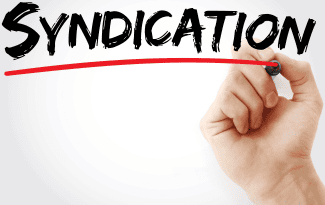How to Budget for your Utility Expenses
Kate Forsyth, Multifamily Utility Company

You’ll need to think about several things to create an accurate budget:
- Rate increases
- Expected seasonal temperature variations
- Resident utilization
Let’s begin with rates. Rate hikes can happen at any time. Generally, the Public Utilities Commission has to approve them. In some cases, other government entities will approve rate hikes. It’s good to keep up with your Public Utilities Commission since they often ask for public feedback when a rate increase is requested.
At the beginning of 2020, we saw significant rate increases across the country. Some increases were requested to allow for repair or upgrades to aging infrastructure. Requests for rate hikes slowed down a bit as the Coronavirus became an issue, and people were ordered to stay home. We expect rate increases to ramp again as the economy stabilizes since many jurisdictions put increases on hold at the start of the pandemic.
Find approved rate hikes listed on rate schedules
Individual providers will post rate schedules on their websites, and approved rate hikes are usually listed on those rate schedules. For example, on this BGE rate schedule, the new rates are scheduled to begin on 10/2020.
You’ll need to examine each account, determine your rate identifier, and then proceed to check when and what the increase will be. In our example, Electricity Supply Rates Will Increase 8.3% Starting October 1st. Under the new plan, BGE electricity supply rates will increase from 6.558 cents/kWh to 7.146 cents/kWh. Further, BGE proposes to keep the rates flat through 2023.
It’s important to know that posted rate increases don’t always show a full calendar year, so you may need to approximate some months if they are not published. You can call the utility provider’s customer service line and see if they can provide additional information.
What to do if rate increases are not published
If no rate increases are published yet, but it’s still possible there could be one, you may want to look at the EIA.gov site for projected rate increases and add that to your budget.
In our example, the residential rate projection is scheduled to increase from 13.04 to 13.39 cents per kWh. However, be sure to ask the utility what month they typically apply for a rate increase to occur, or when the last rate increase was. You can then use the rate increase from that month forward vs. the entire year.
What to do when you have a procured rate
If you have a procured rate contract, you don’t need to schedule a rate increase unless the contract expires during the budget period. You should reach out to your electric broker and ask them what to project.
Seasonal temperature variations
A good source for these is the national weather service. You can determine if your geographic area is expected to have a colder winter or a hotter summer.
Usage trends
Under normal circumstances, usage trends shouldn’t change much on an operational property, so this shouldn’t affect your budget unless there’s a prediction for seasonal temperature variations as above.
There is an exception to every rule, and 2020 delivered huge usage spikes as stay-at-home orders took effect. To be safe, consider your highest 2020 months and plan for them to be about the same in 2021.
Keeping track of these variables
If you have a few units, a spreadsheet will do just fine. If you have hundreds or thousands of units, having a utility management partner or some software to manage these is essential. For most multifamily operators, utilities are the most significant expense after mortgage and taxes. Hence, it makes sense to get the best rates you can, recover resident usage with a utility recovery program, and ensure your master bills are accurate.
Final thoughts
Utility expenses seldom decrease. If you are offering flat-rate or “all bills paid” to your residents, you might want to rethink this strategy. The main reason is waste. The pandemic resulted in many operators seeing utility bills increasing as much as 30%. A resident who isn’t accountable for their usage will naturally use more, with their units cooler in the summer and warmer in the winter. If not paying for water, they will take longer and/or more frequent showers. They may run the laundry and dishwasher more often. In our experience, a community will see about a 20% reduction in utilities when a billing program is in place to charge residents for their usage.
We’re happy to provide a free utility consultation and don’t forget to stop by our virtual booth at the AAOA trade show to get all your utility questions answered.















 Accessibility
Accessibility